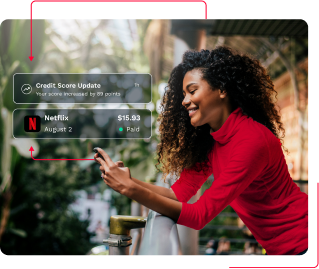Asian American and Pacific Islanders (AAPI) are the fastest growing minority group in the United States, representing nearly 25 million Americans and around 7.2% of the US population. Far from a monolith, AAPI comprise one of the most diverse communities in the United States.
While collecting aggregate data about the AAPI community can be beneficial in some cases, it can also misrepresent the realities of smaller subgroups. This is particularly evident when finances come into play – as the AAPI community has the largest wealth gap of any group.
Who is represented by the term Asian Americans and Pacific Islanders (AAPI)?
The term AAPI represents Americans with roots in Asia and islands in the Pacific (AANHPI is also used to recognize native Hawaiians). The AAPI community is made up of people from many national, cultural, and linguistic backgrounds – each with a rich and unique history in the United States.
“Asian American” is a term coined during the civil rights movement to unite American activists of Asian descent in solidarity. Today, AAPI and AANHPI are used to recognize the shared – and distinct – histories and needs of Pacific Islander and Native Hawaiian communities.
When reported as a whole, data from the AAPI community reflects some groups more than others. Chinese, Indian, and Filipino Americans, for instance, make up a much larger share of the population than Pakistani, Hmong, or Sri Lankan Americans – and are more heavily represented in aggregate AAPI statistics.
How aggregate data masks the AAPI wealth gap
In 2018, the average AAPI income was 38% higher than Americans overall – but this is only part of the picture. In 2018, the top 10% of earners had 10.7x the income of the bottom 10% (compared to a national average of 8.7x).
Research shows different AAPI subgroups have vastly different economic realities. Japanese ($592,000) and Indian American ($460,000) households, for instance, have far higher median net worth than Vietnamese ($61,500) or Korean American ($23,400) households.
What drives wealth inequality among AAPI populations?
1. Immigration History
“From the 1800s railroad workers, to refugees displaced by war, to today’s high-skill tech workers – American imperialism and capitalism have long dictated who has been included and excluded and when.” – Lok Siu, Vox Media.
The history of AAPI immigration to the US is a centuries-long story that continues today. Different AAPI subgroups immigrated in different waves, under different circumstances, and encountered different barriers and opportunities in the US. Their diversity in origins and experiences contributes to the stark economic divide between AAPI communities.
2. Language Barriers
The majority of Asian Americans (5.7 in 10) were born abroad. Immigrant communities face challenges distinct from their US-born counterparts – including language barriers. According to Pew Research, nearly all US-born Asian Americans speak English, while over 40% of foreign-born Asian Americans have limited English proficiency (LEP). Studies show working age LEP adults earn 25-40% less than their English-speaking counterparts.
3. Poverty
A 2019 Pew Research study found Asian Americans were less likely to live in poverty than the Americans overall (10% vs 13%). Of the 19 subgroups studied, however, 12 had poverty rates as high or higher than the US average.
Populus, higher-earning AAPI subgroups can overshadow data from smaller, lower-income AAPI subgroups. For instance, of over 4.5 million Indian Americans, only 6% live at or below the poverty line – compared to 25% of 270,000 Mongolian Americans.
Aggregating data for all AAPI groups results in fewer resources for lower-income AAPI communities, withholding the assistance needed to overcome financial barriers.
3. Education
Median earnings increase with higher rates of education. While AAPI are more likely to obtain a bachelor’s degree – 53% vs. 33% of all Americans – there are wide disparities between communities. For instance, nearly 75% of Indian Americans have college degrees, compared to 1 in 10 Bhutanese Americans.
Major financial challenges faced by AAPI communities
1. Hiring and promotion discrimination
Asian Americans are often portrayed as a model minority — well educated, hard-working and successful. For this reason, they are regularly left out of discussions about discrimination in the workplace and overlooked for promotion. – Christopher S. Tang for LA Times
While AAPI have a strong presence in corporate America, they are highly underrepresented in upper-level positions. One study found Asian Americans the racial group most likely to be hired for high-tech jobs, but least likely to be promoted into leadership. Another found AAPI white-collar professionals the least likely group to be promoted into management – less than half as likely as their white coworkers.
In a recent Gallup Poll, over 30% of AAPIs surveyed reported incidents of employment discrimination – the largest of any group. AAPIs, howvever, only filed about 2-3% of employment discrimination complaints against private employers.
The issue is not limited to areas of the United States where AAPI individuals are a minority workforce:
“My grandpa always told me growing up that in Hawaii he had a hard time getting a job, even an entry-level job, because of discrimination toward the locals. He had an education and had just gotten back from serving in the military, but no one would hire him because he was a Hawaiian man.” -Hosanna Medina, StellarFi creative team
Medina’s story is more than anecdotal. Employment discrimination against Hawaiians on the islands continues to be an issue that affects AAPI job opportunities.
2. Providing for multi-generational households and sending money abroad
A 2016 Prudential Research report found Asian Americans provide financial support to relatives at rates over three times the national average (20% vs 6%). 1 in 10 send money to family members overseas at least once a month – at an average of $400 per transfer.
About a quarter (27%) of Asian Americans live in multigenerational households, comparable to other immigrant populations but higher than the national average (19%). This outsized responsibility to provide familial support leaves less disposable income for AAPI breadwinners to spend, save, and secure greater financial security.
“The pressure for “family to take care of family” creates a difficult cycle to break (in terms) of codependency. Parents don’t save for themselves but instead sacrifice for their children. When children become adults, they are now financially responsible for their parents and children.” – Marco Sison for Money Geek
3. COVID-19 impacts on AAPI community
COVID-19 has disproportionately impacted AAPI and other communities of color across several metrics, each with direct economic implications. For instance, Asian Americans are more likely to work high-contact jobs that put them at greater health risk – particularly in healthcare, where AAPI are over-represented in over 72% of occupations.
AAPI are also more likely to own a small business (1 in 6 adults compared to 1 in 8.4 nationwide). Asian American-owned businesses are over-represented in sectors hardest-hit by the pandemic, like accommodations, food services, and retail.
COVID-19 has fueled a rise in discrimination towards the AAPI community. According to the Mckinsey Foundation, organizations have documented at least 1,900 anti-Asian hate incidents across 46 states since the beginning of the pandemic.
What can we do to meet the collective and individual needs of the AAPI community?
Addressing the wealth gap within the AAPI community will require understanding how and where data misrepresentation causes the economic needs of specific subgroups to slip through the cracks. It will also require confronting issues faced by the AAPI community as a whole, such as hiring discrimination and other racial biases.
- Financial Resources: Providing verbal and written access to financial resources and relief services in Asian languages; orienting education and workforce programs around the specific challenges faced by AAPI subgroups and the community as a whole.
- Financial Literacy: Create literacy programs that reflect unique financial motivators and challenges within the AAPI community (such as providing for extended family) – as well as the needs of subgroups caught in aggregate data’s blindspots.
- Credit Building: According to the Asian American Real Estate Association (AAREA), many AAPI are debt-averse, and have “thin credit” files. Access to alternative forms of credit building can help make home-ownership and other financial milestones more accessible.
StellarFi is on a mission to create financial equity for all
StellarFi offers simple, accessible tools to build credit and generate value. A public benefit corporation, we help override the drivers of cyclical poverty and wealth inequality by providing universal access to good credit and financial solutions.
Getting started is simple – just link monthly bills like your rent, car insurance, and even your Netflix subscription. StellarFi pays on your behalf, then reports your positive repayment history to all three major credit bureaus.
Take your first steps towards Stellar credit – check it out today.


